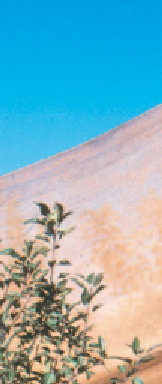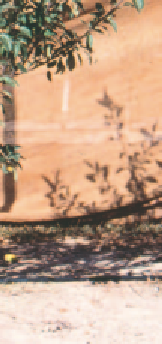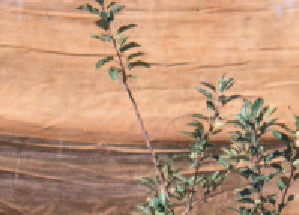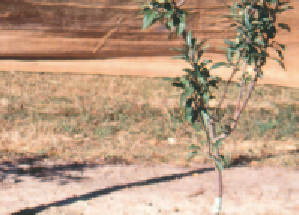Agriculture Reference
In-Depth Information
2 m
1 m
Fig 3.37 Apple replant disease associated with root-lesion nematode. Trees replanted into an infected site (left) and a healthy site (right).
Source of infection and spread
Triggered by a number of biotic and abiotic factors, the
exact cause of the problem varies between sites, but can
involve plant parasitic nematodes, soil-borne fungi and
bacteria, soil chemistry (pH), and nutrient imbalances.
Increase soil biodiversity by short-term resting or
rotation of ground, including the growth of green
manure or brassica mix cover crops.
•
Use long-term rotation of ground with another crop.
•
Soil tests, including measurements of available nutrients,
plant-parasitic nematode counts and pH tests may be
useful for choosing further remedial measures.
•
In Tasmania, research has shown soil-borne bacteria to
be the principle cause, with plant parasitic nematodes
also reducing production. In Queensland, research has
demonstrated root-lesion nematode to be the most
significant factor in apple replant disease.
VIRUSES
■
Cause
Several viruses are widespread in apple varieties grown
in Australia. These include
Apple mosaic virus, Apple stem
grooving virus, Apple ringspot virus, Apple chlorotic leafspot
virus, Apple stem pitting virus
and
Apple green crinkle virus
.
Importance
Apple replant disease is a common problem in orchards
worldwide where apples have been replanted immediately
into ground previously used for growing apples.
Management
•
Symptoms
Most viruses infecting apple show few if any symptoms
on commercial varieties.
Sterilise soils using registered fungicides and nematicides.
Apply lime to soil before planting.
•


































































